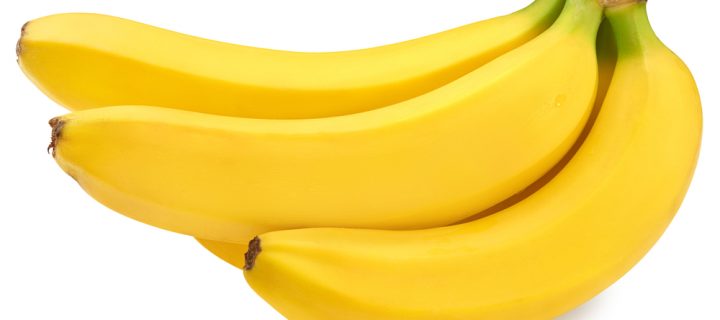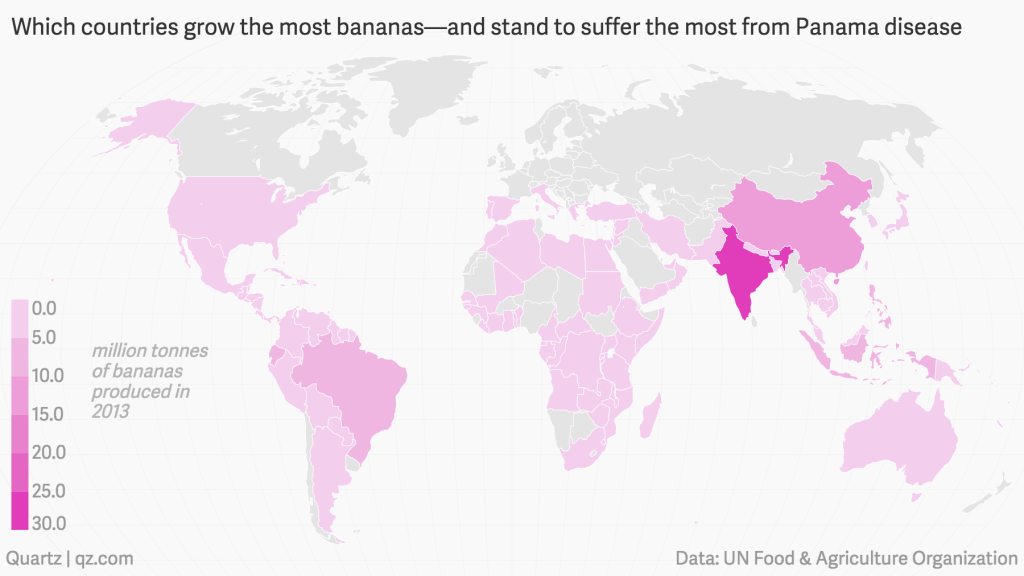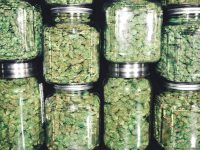The world’s favourite fruit could be at serious risk of becoming extinct.
According to a new study by researchers in the Netherlands, large territories where the most popular banana – Cavandish Bananas – are grown are at risk from Panama disease, a fungicide-resistant pathogen. The disease has breached quarantine efforts and has spread across South Asia, Africa, the Middle East, and Australia.
The scientists say an across-ocean leap of the disease to South America is now inevitable, and that’s bad news. S.A. is where 82% of cavandish bananas are grown, with Ecuador alone supplying over a third of the billion-dollar global export market.
This isn’t the first time the Panama disease has put our favourite fruit at risk. The exact same soil-borne fungus drove the original go-to banana, the Gros Michel, to near-extinction in the 1960s.
The fungus is incredibly efficient at infecting banana crops, and when it does, it’s devastating. Bacteria can lay dormant in the soil for up to 30 years, and it’s impossible for farmers to tell if their crop has been infected. Once the fungi finds and latches onto its host – in this case, the bananas – it goes for the plant’s main water transporter, its xylem vessels. From there, the disease goes to work on the vascular system, causing the fruit to wilt rapidly and turn a horrible yellow-brown colour from the lack of water.
Interestingly, this isn’t quite the same virus from the 1960s. This is a new strain of the disease called VCG01213, or Tropical Race 4 (TR4), a clone of the original Panama disease.
While our bananas aren’t going to disappear overnight, they’ll eventually decline in a really big way if things don’t change fast.
“It takes time for Tropical Race 4 to spread. But once it takes root, the decline is inevitable,” said Gywnn Guilford from a report in Quartz.
The researchers are adamant that the most important thing the international community can do is eliminate infected crops. But for this to be possible – remember, Panama disease is virtually undetectable – a new diagnostic test that can quickly detect the disease in plantations would need to be created. The idea of a Cavendish replacement being developed isn’t a practical solution, they warned.
“Developing new banana cultivars, however, requires major investments in research and development and the recognition of the banana as a global staple and cash crop (rather than an orphan crop) that supports the livelihoods of millions of small-holder farmers.”
Photo credit: D_M/Shutterstock













